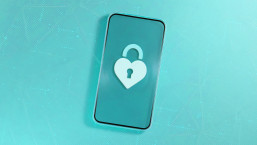It is not often that we cover subject matter in a computer security blog that requires a “trigger warning”, but today is one of those days. The following blog deals with potentially difficult information, regarding protecting people who have been the victims of domestic abuse or stalking, and could trigger an extreme reaction in people who’ve been traumatized by such experiences.
_____
Domestic violence is not something that gets discussed much in information security circles, for a variety of possible reasons, but there are few people who need advice more urgently on assuring their online safety than victims of stalking and domestic abuse. How exactly do the particular information security needs of people in these situations differ from the norm? What can people do to protect themselves when there is a known and persistent threat? After looking into this, I am left with as many questions as answers.
Before we get into the meat of this article, let me provide a frame of reference: I will be focusing on those victims of domestic abuse and stalking who have escaped the situation, and are now looking to avoid further contact with their abusers. The subtleties of getting protection while still in the environment in which domestic abuse is taking place are vastly more complex than “mere” computer security concerns. And because there is so much more to be explored on this particular subject, think of this article less as something prescriptive, and more of an open-ended discussion. If you have experience on this subject, I welcome you to add your voice to the comments to help educate me as well as our readers.
Digital Privacy
Before discussing specific security recommendations, it’s important to point out that any computing devices (that is to say, both laptops and desktops as well as phones and tablets) that predate exiting the domestic violence situation should be considered compromised, and ideally should be replaced, or at least restored to “factory default” if at all possible. This will decrease the possibility of spyware or other tracking software being present on the devices. You may decide to back up (and encrypt) your data to an external hard drive or remote location first, especially if you’re trying to retain evidence or records for legal purposes, but keep in mind that backups may retain traces of spyware: Treat them with caution, and keep them isolated from machines that might be used to reveal your location.
Likewise, it is important to create a new email address that is unknown to the attacker. You may also decide to keep previous email addresses operational, but be careful about when and how you access those accounts so that the attacker cannot glean information about when or where you are at home, at your office, or at other places you frequently visit. Make sure that you update references to this old email address, especially those businesses or services that might give an attacker clues to your current location or that might send password-reset notices to your account.
It’s also important not to share your email address, or any other contact or location information on social media. You should ideally keep as much of this information as possible off these sites entirely, even in private messages. Sharing these details electronically should only be done through encrypted communication methods if at all possible.
It is obvious that all those things that security advocates are wont to say to help people protect their data applies far more acutely to those who are trying to hide themselves from a determined and potentially violent individual. Let us quickly cover those security basics that are even more essential to victims of abuse:
- Regularly updated software
Most spyware installations now exploit vulnerabilities in software to install more silently, but you can help combat this by updating and patching your operating system and any applications on your computer or mobile device as soon as possible. The latest versions of the major operating systems are set by default to at least alert you to both application and OS updates. And over time, operating systems are including more and more security features to help alert you to and/or combat attacks. - A comprehensive security suite
Spyware is easily found or purchased online, which will allow an attacker to view keystrokes, web-surfing history, and potentially to eavesdrop on audio or video capabilities on a victim’s computer or mobile device. A reputable anti-malware product is a good idea, but it would also be advisable to have at least a software or hardware firewall as well, regardless of what operating system you use. You may also wish to look into supplementing your security suite with an application whitelist as well, which limits allowed applications to a specific list of approved software.
- Network and on-disk encryption
The best way to protect your data from prying eyes is to make more of it unreadable to outside parties. And the best way to do this is to encrypt as much as you can; this includes both filesthat are saved on your hard disk, and data that you send out of your machine, via email, web or other methods. Be sure to choose a strong, unique password (or better still; a passphrase) to protect that encryption. The Electronic Frontier Foundation (EFF) website has excellent tool guides to help you figure out how to do this on all the major operating systems, and for a wide variety of communication platforms. You can use this browser extension to ensure that more of your web sessions are encrypted, and use a VPN client to give yourself an additional layer of security for your communications. Many of these things are available for free or at low cost. - Good authentication hygiene
Most of our online lives revolve around logging in to various sites and services. It is also one of the most easily-breached parts of our digital identity. Whether you use a password manager or come up with a system to create a strong, memorable and unique password for each of your various online accounts, be sure to change your passwords when you leave a domestic violence situation, or when you have any cause for concern about the security of your accounts. Victims can also add a second factor of authentication, which will help prevent attackers from getting into victims’ accounts even if they figure out their passwords.
Everyday activities are fraught
Whether an intruder’s motivation is financial or personal – as in the case of domestic abuse – anyone looking to gain access to another’s data has two main ways to go about it: by force, or by social engineering. Gaining data by force would include approaches like direct attacks (either physical or digital), such as the use of malware or hacking into online accounts. Social engineering is a term sometimes applied to any way attackers can convince someone to give them access to data. The target may be either the victim him or herself, or a third party.
The advice given above is primarily intended to protect against direct attacks like malware, and hacking, and to a lesser extent phishing. Technology and good common sense will not necessarily protect you against every sort of direct attack, but it can lessen the risk considerably or at least make it far more difficult and time-consuming for the attacker.
However, not all our data is under our control, and this is where things can get very problematic and complicated. We are all required to provide a variety of personal information in our day-to-day lives – everywhere from the car service center to the accountant. Unfortunately, once out of our hands, it is also out of our control. Many companies have data retention policies and are strict about giving out customers’ information, but many other places do not. Fortunately, the places where it is most important to keep your contact information up to date are also the ones that are most likely to have strict policies.
This is where there are more questions than answers. There is plenty of advice out there for people who are trying to protect themselves after a domestic violence incident. The variety of tips and techniques are seemingly endless, but they boil down to a few basic ideas:
- Relocate
Put physical distance between yourself and your abuser. If you move to another state, make sure your restraining order covers this situation. Be aware that different states in the US may have different rules and policies about when your address can become available as a public record. And different countries may have different laws regarding domestic violence, or restraining/protection orders. In some instances you may be able to pursue protection orders that cross national borders, depending on the countries in question. - Get a burner phone
It can provide an extra layer of safety to get a separate “Pay As You Go” phone that is paid for in cash, which cannot easily be traced to you, especially if you suspect your abuser has put spyware on your devices. The Lifeline program is available in the US for people who need financial assistance in getting mobile or broadband access. Local communities may also have programs available that offer refurbished or donated mobile devices available for domestic violence survivors. Be sure to do a factory reset before using a previously-owned device. - In the US, apply to the address confidentiality program in your state
In some states, programs exist to allow people who have been victims of certain crimes to have a confidential mailing address, separate from their physical address. Check this list of address confidentiality programs in the US to see if you are eligible. - Open a post office box to receive mail
You should have a place to receive mail – ideally not your home or work address – to use for certain accounts and services. Be aware that this is not useful for all services, especially those that require your home address, such as certain types of insurance. - Close accounts that you both have access to
Regardless of how innocuous the account access might seem, if a joint account contains any personal information or historical activity, this could be used by an abuser for social engineering purposes. It is best to close existing accounts and start with no history from previous accounts. This applies equally to accounts like phone service or store loyalty programs or digital accounts such as email or social networking sites. There may be cases that may require, or at least be made easier by, getting a lawyer to help you. Separating from co-ownership of property can be particularly problematic; getting advice from a lawyer can make this process much more manageable. - Be aware of location-tracking
Many applications and services, especially those associated with social media sites, are “location aware” by default, and may share your location when you post, if you “check in” to a physical location, or share a photo with GPS location data embedded in it. Set the privacy options for any services you use to their highest settings, and disable the storing of location data in pictures. Because the specifics for how to accomplish this change frequently, it’s best to do an internet search that includes the name of the app, website, or operating system where you’re trying to disable tracking. While social media sites or forums can be a wonderful source of support, there isrisk associated with using online services: carefully consider and severely limit what information you store or share on the Internet. - Be aware of your surroundings, both physically and digitally
As you go about your daily routines, both in the physical world and the digital one, it is important to be aware and mindful of your surroundings. What information are you intentionally giving out? What information are you (or others, on your behalf) inadvertently giving out or leaving lying around? Who can see where you are, where you are going, or where you have been? - Guard your data
Now that you are aware of what data you have that might be gleaned by an intruder, take steps going forward to keep it protected while it is in your care (such as with encryption, or being judicious with app permissions). Be cautious in selecting those who get information about you. Whenever possible, give out only information that does not link to your home or work address. - Avoid web sites and services administered or moderated by the abuser
If your abuser regularly accesses (or even helps administer or moderate) a web site or service you both use, stop accessing it, as they may have access to server logs or email headers that contain your network connection’s IP address. IP addresses can be geo-located in order to determine approximately where a computer is located. This also includes online games, as in-game communications and actions may reveal your location as well. - Block all contact from the abuser
Email and messaging account traffic can similarly be used by abusers to gather location data on their victims, so wherever possible block accounts known to be used by him or her. You may also wish to block accounts used by friends or family of the abuser. Blocking phone calls may be more problematic; while your phone service provider may allow you to block a limited number of phone numbers, abusers have plenty of options for using different phones to get around blocks. If the abuser gets your new phone number, it may give them clues as to your new location if your new device was purchased in the area where you’ve relocated.
The advice here is solid in theory, but in practice things can be significantly more difficult. Keeping this in mind, you may be able to be proactive against some of the hurdles you may face. Having legal paperwork, including your restraining or protection order, may make it easier to get hefty fees or objections waived when you try to cancel accounts or withhold certain information.
And other well-meaning people may undo your efforts to keep your information private, if they are not aware of your situation. In a case in Sweden, a woman and her two children left their abuser, but the abuser posted a plea on Facebook and asked people to share his request to help him find his children, resulting in the protected identities of the mother and children being blown. As we often advise in security circles, no protection is 100% secure. But the more ways you manage to cover your risks, the more time and space you can gain to allow you to resurrect damaged defenses.
Additional Protection
There are additional steps you can take if you are looking for a more thorough change of identity, though be aware that these changes will not give you a completely clean slate, one that is unattached to your old identity. The National Network to End Domestic Violence website debunks some of the myths surrounding the process of changing your name and social security number.
You may also wish to try to remove as much of your presence from the Internet as possible. While it is not entirely feasible to completely remove your digital presence, you can certainly reduce it. This PopSci article lays out instructions for removing your presence from some of the more popular social networks.
Some final thoughts
The more real and physical the possible danger against which we are recommending protection, the more scary it is as a writer to provide a list that could potentially be (or in this case necessarily is) incomplete. This article barely scratches the surface of things to consider. Due to the huge volume of legal requirements and permutations, there is an almost infinite number of things you can (and potentially should) do to protect yourself from an abuser. Ideally this is something you should discuss with a lawyer and a social worker, so that you can thoroughly cover ways to keep yourself safe.
Here are some additional resources, for further information on the subject:
- http://www.thehotline.org
- https://nnedv.org/content/safety-net/
- https://www.techsafety.org
- https://humantraffickinghotline.org/stay-safe-online
- http://victimsofcrime.org/our-programs/stalking-resource-center




